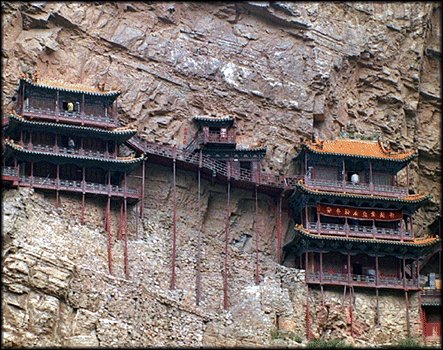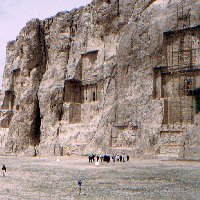| Ancient Architecture
The Art History Archive - Architecture
Reaching for the SkyBy Charles Moffat - December 2007. Even at an early stage mankind strove to build higher and higher. We build on a ridiculous scale and spend thousands or millions of hours of labour on a single piece of structure, which may or may not be prone to earthquakes and other ravages of time. Some of our most impressive structures are actually incredibly old and difficult to determine the precise dates they were built. We still don't have a clue how the Great Pyramid of Giza was built, or its precise purpose. Despite what you may have heard, no mummy has ever been found in the Egyptian pyramids, they were all found in the Valley of the Kings. So the true meaning of the pyramids is actually a mystery. As is the technology used and the matter of how multiple cultures in Africa, the Middle East and Central America all built pyramids around roughly the same time. The matter has had archeologists both professional and amateur alike scratching their heads and theorizing why and how this could have happened. Why do we aspire to such grand heights? Ego perhaps. In some cases we might not have much choice but to build upwards if the population grows very dense and land close to water and food is scarce. We thrive in some of the most inhospitable places on the Earth, and always we build upwards. There is no precise beginning for the history of architecture either. Our earliest buildings date from either the end of the last ice age or during the ice age, which was only 10 to 15 milleniums ago. Likewise, there was no precise ending of the ice age. We presume it phased out slowly, but it could have changed quite quickly in a matter of decades or years. We really don't know. It was a time of dramatic changes, massive floods and earthquakes. Such dramatic earthquakes that people in two separate parts of the world (Egypt and Bolivia) started building earthquake resistant structures that still stand today. Elephantine Island in Egypt and the Ruined City of Tiahuanacu in Bolivia used identical techniques to securely fasten the stones in their buildings and make the overall structure more impervious to time. Pyramids are the prime example of that pioneering human spirit to build something indestructible, and the earliest pyramids are not Egyptian, but were instead built in Mesopotamia and Zimbabwe. The fact the people of Zimbabwe started building pyramids first is incredibly interesting. Africa was after all the birth of civilization. It is there we find the oldest surviving structures and the beginning of our aspiration to build higher.
The Greeks spoke of Mount Olympus and strove to emulate the gods by building on top of mountains. The peoples of the Middle East built massive Ziggurat step pyramids and inspired the story of the Tower of Babel. We can only assume that the early people who built towers of stone in Zimbabwe had some kind of religious or even scientific reasoning behind what they were building. When we talk of such structures we cannot ignore the scientific aspect. These were obviously cultures with an interest in engineering, science and exploring the boundaries of what they could build. Regardless of whether it was a temple, a palace, a coliseum for games, an amphitheatre for dramatic performances and politics, there was always that underlying engineering and creative spirit. All they needed in truth was the hands to carry the stones, the tools to cut the stones, the brilliance of their engineers and above all else: The will to build it.
Ancient Africa
Ancient Babylon and Persia
Ancient Egypt
Ancient Greece
Ancient Incan
Ancient Mayan
Ancient Rome
|
|




